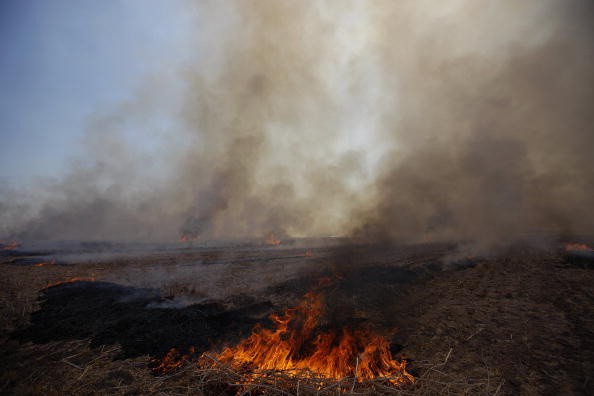Measurements made by National Oceanic and Atmospheric Administration (NOAA) show that methane concentrations in the atmosphere have hit 1,900 parts per billion (ppb). This is a significant increase from roughly 700 parts per billion prior to the industrial revolution.

Sources of Methane
Methane is a potent greenhouse gas, but it remains in the atmosphere for about nine years. Since 1750, its cumulative global warming impact has been around half that of CO2, including the knock-on effects on other gases.
Atmospheric methane levels stabilized in the 1990s after a brief spike in the 1980s and 1990s. Recovery began in 2007 and has picked up steam in subsequent years, with the most significant increase occurring in 2020, according to Science Alert.
So, what's causing the recent increase - and is there a way to stop it?
Every year, the atmosphere receives about 600 million metric tons of methane emissions. Two-fifths of these emissions come from natural sources, mostly decomposing vegetation in marshes, according to estimates. A third of the remaining emissions are linked to human activity.
Fossil fuel industry emissions now exceed 100 million metric tons per year, and this number shot up dramatically in the 1980s. Most of the natural gas used in the United Kingdom to heat houses and produce electricity is methane.
Leaks in the gas distribution system, wells, pipelines, and distribution pipes under streets, as well as boilers in private residences, are all too common. Ventilation shafts in mines and the transportation and crushing of coal for power stations contributed to up to one-third of fossil fuel emissions between 2000 and 2017.
The largest single source is agriculture, which generates around 150 million metric tons of material per year. Approximately 70 million metric tons of waste is generated annually from municipal landfills and sewage systems.
The ratio of atmospheric carbon-12 to carbon-13 can help scientists pinpoint where methane is coming from. Isotopes are the scientific term for these several forms of carbon that are chemically similar but differ in mass.
Rise in Biogenic Emissions
Since 2007, methane's rise in the atmosphere has been mostly driven by sources in the tropical and subtropical regions. High latitudes have also played a crucial role in some years.
From Amazonian swamps to Nile and Congo River basins to Russian tundra and Canadian muskeg, wetlands generate about 200 million tons of methane every year.. The rate at which wetlands produce and breakdown biomass is increasing as global temperatures rise, and as a result, these habitats are releasing more methane.
According to Access TV Pro, an increase in methane emissions leads to an increase in climate change, which in turn leads to an increase in methane emissions. Microbes in the ruminant animals' guts are comparable to those found in wetland environments.
Cows are literally grazing on the wetlands. Approximately 115 million metric tons of methane are produced by ruminants each year. More than two-thirds of the world's agriculture is dedicated to livestock pastures.
While landfill emissions have been reduced in many European countries, biodigesters, which turn food and garden waste into fertilizer, still generate a significant amount of methane throughout Western Europe.

Efforts to Reduce Emissions
Cutting methane emissions quickly reduces greenhouse gas emissions. Gas leaks, both at wells and in leaking street pipes, are obvious targets. In order to reduce methane emissions, as well as CO2 and air pollution, it is imperative that the coal industry be abolished.
Methane removal from coal mine air ventilation and cow barns can be accomplished as readily as pollution removal from automobile exhausts in the near run. There will be a need for stronger government regulation of emissions from biodigesters.
Stopping the burning of crop waste is one way to reduce emissions in tropical countries. It is possible to reduce emissions from landfills by covering them with soil, but landfills are expected to increase rapidly. As the world's population expands and meat consumption rises, agricultural emissions are expected to rise as well. Increasing access to education for women and girls slows population growth.
There is a fire alert if methane levels reach 1,900 ppb. Humans can't stop the emissions from wetlands, they're inevitable. However, human-caused emissions may be reduced rapidly and effectively. More than 100 countries agreed to limit methane emissions 30 percent by 2030 at the COP26 climate change summit in Glasgow in November 2021.
Related Article : Methane From Gas Stoves Worsens Climate Change and Harms Your Health
For more news, updates about methane pollution and similar topics don't forget to follow Nature World News!
© 2025 NatureWorldNews.com All rights reserved. Do not reproduce without permission.





